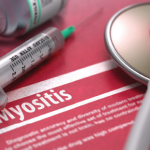Bansari Gujar, MD, a rheumatologist with Rheumatology Associates of Baltimore, has attended annual meetings of the Maryland Society for the Rheumatic Diseases (MSRD) since she was a fellow at the University of Maryland Medical System. This year, Dr. Gujar will oversee her first annual meeting as the society’s president.

Dr. Gujar
“For the past two years, we’ve held our continuing medical education (CME) meetings virtually,” says Dr. Gujar, who became president in January. “We’re launching into a new annual meeting format and look forward to welcoming members back in person. There’s a real sense of community and camaraderie when we meet in person, and meetings such as these will hopefully provide opportunities to engage with and support our colleagues and expand our professional networks.”
This year’s annual meeting, Oct. 14–15 at the Hyatt Regency Baltimore Inner Harbor, will feature notable speakers and a variety of topics of interest to rheumatologists, nurse practitioners and physician assistants. Among the subjects to be covered are COVID-19 and autoimmunity, pregnancy and rheumatic diseases, giant cell arteritis, systemic sclerosis, novel therapeutics for lupus and updates and difficult cases in myositis.
“Our meeting is open to all rheumatology professionals,” Dr. Gujar says. “The majority of attendees come from Maryland, but we also hope to have participants from Delaware, Philadelphia, Virginia and Washington, D.C.” For more information, visit www.msrdmd.net.
As the new president, Dr. Gujar hopes to expand the society’s advocacy efforts.
“Our goal is to become involved in legislative discussions impacting rheumatologists and our patients in Maryland. It’s important that we advocate at the state and federal level for legislation that supports patient care and ensures our patients have access to the medications they need at an affordable cost,” Dr. Gujar says. “This includes becoming more involved in ACR advocacy efforts that address issues that impact patient care significantly, such as step therapy, non-medical switching and increasing oversight on pharmacy benefit managers.”
Because physical therapists and other professionals are an important part of the rheumatology team, Dr. Gujar hopes to expand outreach to invite these groups to join MSRD and offer them CMEs.
MSRD also engages with clinical fellows at the University of Maryland and Johns Hopkins University, both in Baltimore, by offering grants that allow them to attend the annual conference at no charge.
A Total Cost of Care Model

Dr. Christopher-Stine
Lisa Christopher-Stine, MD, MPH, professor of medicine and neurology and director of the Johns Hopkins Myositis Center in Baltimore, is the immediate past president of MSRD and has been a member of the state’s rheumatology alliance since 2001. She served as president from 2006–2012 and again from 2018–2022.
“Dr. Gujar has an excellent vision for the future of MSRD, and I think it’s valuable to have MSRD leadership regularly transition between rheumatologists who work in private practice and those of us who work in academia,” Dr. Christopher-Stine says. “We’ve also discussed the possibility of holding some MSRD meetings outside of Baltimore to make it easier for rheumatology professionals in other parts of the state, including western and southern Maryland, to attend.”
Dr. Christopher-Stine notes that Maryland utilizes a unique healthcare financing model, the All-Payer System (APS). This statewide rate-setting program requires all insurers, both public and private, to pay the same, administratively set rate for any service provided at hospitals. Yet while the state has made notable progress in controlling hospital costs, APS is not without its challenges.
“Infusion therapy for RA and other rheumatic diseases can be difficult to navigate under APS,” Dr. Christopher-Stine says. “Since infusion therapy can be managed at a patient’s home, a physician’s office or an outpatient clinic rather than at a hospital, where the cost is higher, there’s greater payer scrutiny of where infusion services are delivered.”
Dr. Christopher-Stine also notes that telemedicine has become a more popular option for rheumatologists since the beginning of the pandemic.
“Many rheumatologists adopted telehealth visits out of necessity but are continuing it for some patients who live in rural areas or who prefer the convenience,” she says.
Although telemedicine doesn’t replace the need for in-person exams, Dr. Christopher-Stine says it can be a useful tool for patients with stable disease as well as patients with rare rheumatic diseases, such as myositis, for whom traveling to an appointment can be burdensome or even cost-prohibitive.
“As a rheumatologist with expertise in myositis, a rare subspecialty, I was licensed to provide telehealth services in over 30 states during the pandemic,” she says. “Telehealth can also be valuable in pediatric rheumatology, where there’s a nationwide scarcity of subspecialists.”
Linda Childers is a health writer located in the San Francisco Bay Area.



